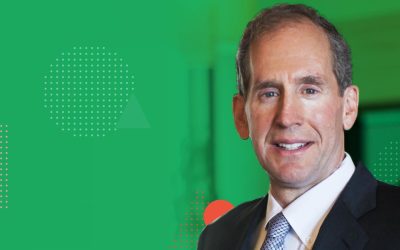As sights turn to year-end, and the budgeting process, Airbase hosted a webinar on how to build plans in an uncertain economic environment. Our speakers included finance practitioners from people management company Lattice, who shared their first-hand experiences, and Pilot, a finance and accounting services company, who laid out their best practices for budgeting.
The conclusion by our speakers was that, with careful planning, a thoughtful process, and the right tools, it’s possible to build a budget that can drive growth and protect a company’s fiscal health, no matter what 2021 brings.
Nick DeCesare, Lattice’s Finance Manager, and Jason Lopez, Lattice’s Controller, joined Nick DeCesare from Pilot to discuss the value of budgeting, and how they’re approaching it this year. All speakers emphasized the importance of two central steps for budgeting success: Start early and iterate.
These elements are particularly important in preparing for 2021, when the uncertainty triggered by the COVID-19 pandemic threatens the reliability of economic forecasts. While it’s clear that solid budgeting gives a company an idea of how, when, and where it needs to invest resources to achieve its business objectives, the conclusions reached need to be open to reconsideration throughout the year. This need for adaptability should be communicated to budget owners and built into an ongoing review cadence. Indeed, budgeting should not be seen as a discrete project but as an ongoing process.
Why the early bird makes a better budget.
“Put some time in up front to place yourself in a good position heading into the new year,” advised Jake. “You don’t just want to jump in and start crunching numbers.” Instead, start by considering the various business drivers that affect your revenue, then identify the factors that could impact their performance in the next year. From that point, you can create best-case and worst-case scenarios, taking into account not only the trends potentially driving growth, but also the key risks that could slow it.
“Startups are great at thinking positively about growth, but I want to double down on the importance of also thinking about the things that can go wrong,” Jake said. To build in the responsiveness required to face risks, it’s essential to establish visibility into where your business is headed — and why. “The more analysis that you do now, the more capable you will be at responding to the quakes and shocks of the next 12 to 18 months,” he added.
Nick noted that Lattice recognizes the importance of taking a bit more time for 2021. “In my past life, planning was a Q4 activity,” he said. “This year at Lattice, there was a pretty big appetite to start early, so we started in late July.”
The only thing constant is change.
Forecasting economic growth is a real challenge for 2021. Indeed, the unpredictability of the year ahead means it’s important to be able to adapt. “It’s key that you’re assessing what’s going to change and thinking through as many different scenarios as you can,” Jake said. Determining ‘best-case,’ ‘worst-case,’ and ‘expected’ scenarios on which to build a budget can help you prepare for the future.
Jake explained that an annual budget is all about developing a mastery of several factors and how they interact. “Budgeting requires closely examining all aspects that affect results for your business,” he said. For example, when identifying elements that could influence revenue, assess your customer base and how it could change in the coming year. Consider whether you rely on direct sales or a self-serve model to attract customers. In a self-serve acquisition strategy, the cost of driving people to your website, and any possible variations in that cost, needs to be built in. Getting the data on what channels are most effective in terms of marketing spend is critical. But the most cost-effective channels can change from year to year, so pricing variations need to be accounted for. Jake advised doing in-depth research and not hesitating with regards to contacting vendors for information about anticipated pricing shifts.
“You really want to double check the trends that you see, and hopefully extrapolate from them,” Jake said. “Build into the budget the things that you are planning to make changes to.” As the budget takes shape, you may notice multiple elements in your organization that need to change. Those insights are great, but it’s unlikely that you will have bandwidth to tackle all of them in the next year. Only things that are actually going to change in the next 12 months should be built into the forecast.
“There’s always going to be some guesswork in forecasting, so make sure you have a strong foundation of data,” Jake advised. Essentially, your budget is built upon that foundation, and without reliable numbers, the whole structure can tumble down. “It’s really important to assess how accurate the books are from the start,” he added. On top of making sure the data is accurate, it’s also important to look at the process behind its creation: Is it repeatable? And sustainable? The accuracy of your data is dependent on the process behind it, so you want to be able to sustain that process as you grow.
“Good financial technology is incredibly important, because the accuracy of the data will only be there if you have a process to make sure that it’s all there and that it’s timely.”
Jason Lopez confirmed the value of automated data for Lattice, particularly with regards to an automated sync to the company’s GL. Thanks to the combination of Airbase and Pilot, which handles the day-to-day bookkeeping entries, he said that he now has time for bigger projects, such as a recent migration to NetSuite.
The timeliness of the data also helps Lattice’s finance team stay flexible in terms of providing budgeting reports to department heads. “With our previous credit card program, we would have to wait for the month close, because we didn’t have that constant stream,” Jason noted.
Tools for success.
Nick said that, as Finance Manager at Lattice, he has adopted new budgeting technology. “About a year ago, we were still spreadsheet based. Then we switched to Adaptive Insights for budgeting, which allows us to scale the financial model more quickly. It also allows for better version control.”
“In the post-COVID world, things are obviously going to be a bit different, and we don’t know for certain how things are going to react. We want to give ourselves the flexibility to move up or down in terms of the capacity-based roles. What does the next quarter look like from a likelihood standpoint — where are we going to land? Then we adjust as necessary,” said Nick. “It’s a shift in overall strategy for us, but it’s one that’s going to pay dividends. We’re not going to be holding ourselves to these rigorous numbers we set nine months prior that are no longer really likely.”
Once budgets are finalized, having the right system in place for enforcing them is essential. Most companies do not have full visibility into their actual spending against budget until after the month-end closing of the financials. Increasingly, however, tools are available for tracking actual spending against budgets in real time.
Lattice relies on Airbase’s management platform to give them a 360-degree view into all non-payroll spend any day of the month. When budget owners can view up-to-the-minute reports, they can better manage their team’s spending. A spend management platform also includes approval workflows which can be easily adjusted, up or down, to reflect budgetary changes. This allows companies to react to changes in the business environment, so adjustments can be applied company-wide in a matter of minutes.
Moving forward.
Once your actuals are ready, a rolling forecast can help finance teams pull in the latest actuals to cross-reference against what was budgeted. Jake says that Pilot has noticed an increasing number of companies see the value of the rolling budget forecast. “You get a better sense of what went right and what went wrong, so that you reduce the budget risks throughout the year,” he explained.
“If you have a financial goal, it can’t really be achieved without accountability and monitoring.”
For Lattice, constant monitoring has been a key for budgeting success, and they use a monthly cadence for review. Nick explained that their approach to building the budget is a hybrid of a tops-down and bottoms-up approach that provides both accountability and responsiveness.
“Revenue plans were set top down, as well as capacity-based functions, like sales and customer experience. From using that approach for determining revenue, we were able to set some spend envelopes using metrics, like CAC, to set amounts for marketing and R&D, and determine strategic initiatives on how to actually meet those goals in 2021, while operating within the spend envelope.”
By creating best-case, worst-case, and expected scenarios, Lattice is able to work with multiple models. “We’re basically allowing ourselves to move up and down in the other departments, depending on how we’re trending. The forecast is adjusted dynamically throughout the year,” Nick explained.
The need to be responsive to market conditions is supported by better tools to view data, and implement changes. As companies adopt these tools, they will be less dependent on guessing right in their forecasts and able to be more proactive about adjusting to changes on the ground.
 Jira Integration – Streamline Your Workflows
Jira Integration – Streamline Your Workflows  Ironclad Integration – Simplify Legal Operations
Ironclad Integration – Simplify Legal Operations  Asana
Asana 




